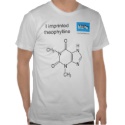|
|
Reference type: Journal
Authors: Harvey SD, Mong GM, Ozanich RM, Mclean JS, Goodwin SM, Valentine NB, Fredrickson JK
Article Title: Preparation and evaluation of spore-specific affinity-augmented bio-imprinted beads.
Publication date: 2006
Journal: Analytical and Bioanalytical Chemistry
Volume: 386
Issue: (2)
Page numbers: 211-219.
DOI: 10.1007/s00216-006-0622-z
Abstract: A novel, affinity-augmented, bacterial spore-imprinted, bead material was synthesized, based on a procedure developed for vegetative bacteria. The imprinted beads were intended as a front-end spore capture/concentration stage of an integrated biological detection system. Our approach involved embedding bead surfaces with Bacillus thuringiensis kurstaki (Bt) spores (as a surrogate for Bacillus anthracis) during synthesis. Subsequent steps involved lithographic deactivation using a perfluoroether; spore removal to create imprint sites; and coating imprints with the lectin, concanavalin A, to provide general affinity. The synthesis of the intended material with the desired imprints was verified by scanning electron and confocal laser-scanning microscopy. The material was evaluated using spore-binding assays with either Bt or Bacillus subtilis (Bs) spores. The binding assays indicated strong spore-binding capability and a robust imprinting effect that accounted for 25% additional binding over non-imprinted controls. The binding assay results also indicated that further refinement of the surface deactivation procedure would enhance the performance of the imprinted substrate
Template and target information: bacterial spores, Bacillus thuringiensis kurstaki spores
Author keywords: Bio-imprinted beads, Selective spore capture, concentration, Analysis of biological pathogens
|


 I imprinted theophylline T-shirt
I imprinted theophylline T-shirt







 magenta MIPs mug
magenta MIPs mug







 I love MIPs mug
I love MIPs mug






